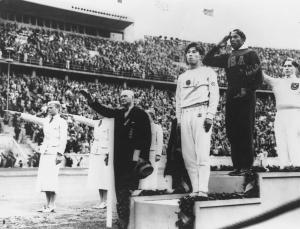People nowadays enjoy music in various forms. In the form of singing and dancing, there are countless styles. Like people today, people in the past enjoyed singing and dancing. However, there are some differences between the past and present dance styles. This is because back then there were strict social statuses. This influenced their lives a lot, even thei r leisure activities. The form of dancing and singing and the style of music they made formed very differently because of this. Especially, the lives of people in the court differed from the lives of other people.
During their school years, students in Korea learn a lot about the culture outside the court: talnori, plays with people in masks, are usually satires about society, pansori, also a kind of satire, with two people, one singing and using certain gestures and the other playing Korean drums, called buk. These are well-known parts of seomin (ordinary people) culture. However, what about the court culture? I think we are a bit ignorant about it. What was it all about? Let’s find out together.
The Start of Court Dancing
Court dancing bloomed splendidly throughout the Goryeo Dynasty to the Joseon Dynasty. The formation of the framework of court dancing started when the political system became centralized. The formation became detailed while the culture of the Joseon Dynasty developed. With the books from those days, Aghaggwebeom (a book covering events and the music of the Joseon Dynasty) and Goryeosa (a book of the history of the Goryeo Dynasty), court dancing was handed down to posterity. In the past, when court dancing was first created, it was more a vital ritual event than a form of art. The beginning of court dancing was mostly from the melody, handed from the past, with new lyrics and dance movements being added. The storyline of court dancing was about wishing for the longevity of the king or blessing the prosperity of the Joseon Dynasty. The form of dancing had changed gradually throughout the Joseon Dynasty and the form had diversified a lot. But there were two fixed categories that were classified by where they came from: Dang-ak court dancing and Hyang-ak court dancing.
Dang-ak and Hyang-ak Court Dancing
Dang-ak court dancing is the first form of court dancing in the history of court dancing. It is a form of dancing which originated in the Song Dynasty in China. The word “Dang-ak” refers to Chinese music in a broad sense. While Dang-ak court dancing developed, a new form of court dancing emerged as a form of “our” (or Korean) music as different from the Chinese origin of Dang-ak. The new form was called “Hyang-ak”, which means it is a musical form of our own. There are some differences and similarities between them, as listed below.
|
|
Dang-ak |
Hyang-ak |
|
Instruments Used in the Ritual |
Jukganja, Ininjang, Yongsun, etc. |
None |
|
The Language of the Lyrics |
Chinese |
Korean |
|
Phrases for Blessing the Event |
Used |
Not Used |
Due to the difference in origin, court dancing settled in two different forms. However, later the two dancing styles integrated. The reason for this is that there were some similarities between the two court dancing styles. First of all, the theme of the dancing is not about personal feelings or expressing one’s own emotions but about praising the late kings’ charity or praying for the longevity of the current king. Second, like many other traditional dancing styles, court dancing has movements of leisurely rhythm and graceful dancing. Lastly, dancers dance while music is played with lyrics about the dance movement.
My Visit to Changdeokgung for Court Dancing
If you want to know more about court dancing, there are several ways that you can experience it. Under the supervision of the Korea Cultural Heritage Foundation, there are lots of events held in palaces, including court dancing. I saw chun-aengjeon, geommu (sword dancing), and buchaechum (traditional fan dancing), which are traditional dancing styles at special court events held in Changdeokgung at the event called The Moonlight Tour of Changdeokgung. Among those dances shown during that event, chun-aengjeon is classified as court dancing, while the others are related to both court dancing and dances of ordinary people. I would now like to explain about chun-aengjeon.
Chun-aengjeon was first performed in 1828. Chun-aengjeon means “nightingale singing in spring.” It is a dance which is performed in a restricted area, a mat called a hwamunseok. Every dance movement in it is both graceful and in a very slow tempo. The movements of the dance mimic the movements of nightingales in the spring. While watching the dance, I could see some movements that might be expressing the fluttering of the wings of a nightingale. Slowly, but beautifully, the dancer showed one of the best traditional dances in Korea.
Before I became interested in court dancing, and before I watched the performance, I had no idea about what court dancing was or what the different kinds of court dancing were. Right after I watched it, I was impressed by the great beauty of the dancing and felt a bit embarrassed for not knowing anything about it. So, I spent some time searching for more information about court dancing. I learned some facts, such as: the dances performed that night were in different sections in court dancing.
The Moonlight Tour of Changdeokgung was an event where I felt I could become a member of the royal court and enjoy such rituals. At first, I attended just because I was curious about the night view of the palace, but it felt like I was getting more out of it than I had expected. The experience that I had was worthy for more attention from people. While I was in that courtyard enjoying the dark night with the cool breeze, I thought about the leisurely life inside the court in the past. The best feeling I had was that the atmosphere of the place made me feel like being a king in the court.
How about experiencing court dancing yourself by participating in the events? Although the style of court dancing now remains only in the form of dancing and music, we have to remember that it is a great ritual custom from the past. In addition to the ordinary people’s culture, which is more well-known to the public, I hope you will learn more about the beauty of court culture, especially dancing, in the beautiful ancient palaces where court culture developed. The event that I visited, The Moonlight Tour of Changdeokgung, was enough for me to learn more about these aspects of this great culture of ours. The tour contained information about more than the ancient palace that can be enjoyed during the day and the beauty of the old palace that can be seen during the daytime. Particularly, the event that includes a traditional arts performance that is an opportunity that should not be missed. So, I hope you can see it for yourself at least once. The Changdeokgung event, the event I participated in, will be held again in the second half of the year. In addition, various events are being held in five palaces in Seoul by the Korea Cultural Heritage Foundation, so I hope you can find more information through its website below.*
*Korea Cultural Heritage Foundation: http://www.chf.or.kr/
Choi Seoyoung think0412@naver.com
<저작권자 © 홍익대영자신문사, 무단 전재 및 재배포 금지>





